








After a wonderful tour through Rajasthan, we found ourselves a little “India-ed” out. The constant noise, harassment, and air quality made us yearn for a more peaceful experience – especially as we now no longer had the comforts of our tour guide, Manu. So, we decided to take a little staycation and book a nice hotel in New Delhi’s 'Aerocity'. It was a perfect western bubble next to the airport where we could just slow down and pretend like we weren't actually in India before we ventured off on our own. It was also New Years Eve and nice to have a bit of extra comfort to celebrate, reflect and catch up with family and friends with good enough wifi for video calling.












Jelley was on her final stretch in India before moving to Frankfurt to start her new job at the European Football Championships (EURO2024), while Luke was preparing for a solo adventure in South India (the trip we had originally planned together!). We had just under 2 weeks left together, and didn't know when or where we would reunite again. Our staycation was pretty cruisy. We wandered around various shops, eating western food like pancakes and Subway, and even found a newly introduced "frozen food shop" (lol).
As we finished our staycation and re-entered the real India, we felt reinvigorated to take on one last destination together—Jaisalmer, Rajasthan's famed "Golden City." We had seen photos of Jaisalmer before our trip and Jelley’s brother & sister-in-law said it was a must-see. When we arrived at the airport there was a long drive through nothing desert before we made it to the quaint city which was quite a sight! We opted to stay at a cute hotel with a nice rooftop that overlooked the fort city. We had a lovely curry on our arrival and the reception even coincidentally had a little New Zealand flag which made us feel extra welcome.










Conveniently, our previous tour guide, Manu, was a local of Jaisalmer, so we were armed with some insider knowledge. He kindly introduced us to another local guide, Rakesh, who planned to give us a tour of the city's famed ‘living fort’—a massive structure that still houses residents within its walls, Rakesh included. Most of the forts we had seen in Rajasthan so far were converted to museums so this was one particularly unique because it still housed residents that have lived in the fort for generations!
Before we started our tour we took a quick walk around to get familiarized with our surroundings. The walk was an abrupt reminder that our staycation was over and we were back in the hustle and bustle of India again. We did a lap around a busy market and quickly had enough and headed home to watch the sunset from the comfort of our rooftop.






Rakesh picked us up in his riskshaw in the morning and we headed to the fort. Rakesh was a really nice guy which we were relieved about. You never know with these blind referrals, but it was so nice to know that we were in good hands with a friendly local.






One of the highlights in the living fort was visiting the Jain temple, a stunning structure made entirely of sandstone. While it was similar to the one we saw in Ranakpur which was made of marble, this temple was unique. Jain temples are rarely found within forts. This one, however, also featured Hindu deities as a condition of being built inside the fort, as part of a negotiation with the ruler at the time. We've seen a lot of temples in India and abroad but this was was honestly mind-blowing with the level of intricate details.

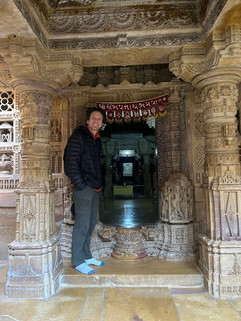








On our walk around the city, we even stumbled upon a scene straight out of a Jackie Chan movie (literally—he filmed Vanguard there!). Rajasthan truly lived up to its name as the "Land of Kings." The wealth accumulated from Silk Road taxes many years ago, often in the form of gold and silver, was evident everywhere.
We wandered around various different parts of the fort and Rakesh showed us secret cafe that only he knew about which was pretty special. He brought us some Chai Tea and we soaked up the beauty of the fort all to ourselves.






Rakesh took us to see a Haveli museum and then we had lunch on another rooftop which was awesome. We also went to another textile shop which we weren't overly thrilled about as we certainly weren't going to order any rugs or tablecloths, but it was interesting nonetheless.










In the evening, we enjoyed the serene beauty of a nearby lake, watching the sun dip below the horizon. Rakesh also invited us back to his family restaurant that night for dinner. His restaurant was inside the fort and it was coincidentally named "Little Tibet" which felt so fitting giving our prior mountain adventures on the border of Tibet. We enjoyed a simple yet delicious meal of momos (dumplings), soaking in the rich history surrounding us.












Our Indian adventure wouldn’t be complete without a trip into the desert. So the next day, we set off to the Thar desert, just 50 km from the Pakistani border. We hopped in the back of a jeep to head out to meet our friendly camels to head off into the desert. First stop was a random fort on the way, unfortunately our driver didn't speak a lot of English so we're not entirely sure about the history. We had seen sooo many forts at this point, we were a little over it, especially in the heat - there sure a lot of forts in Rajasthan!


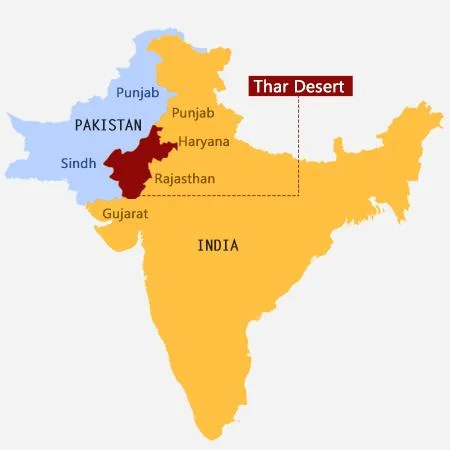



We arrived at the end of the road and met our trusty transportation camels. We had one other travel companion who was just going to be joining us for the day. Super random guy who worked in finance and was looking for a bit of adventure. He looked the part too with his collared shirt and cardigan, straight out of a Swiss bank.






We arrived at our own little private campground in the middle of the Thar desert. It was absolutely spectacular. We watched the sun set over the endless rolling hills of sand. It was a truly memorable sunset, and we felt a long way from the big cities of India.





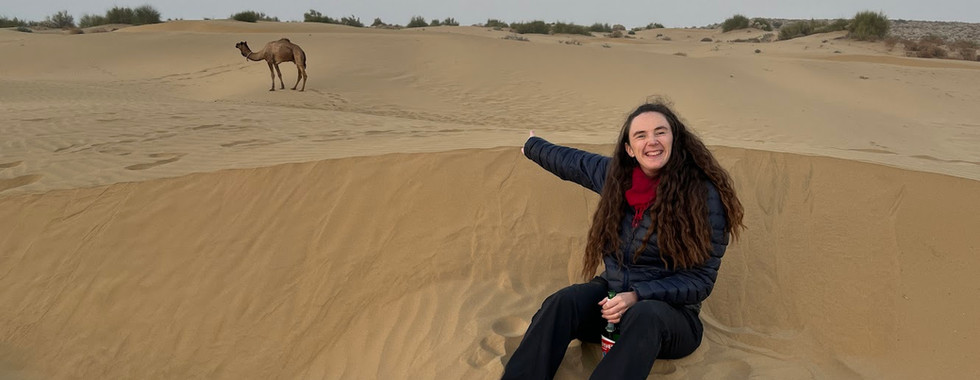






Our trusty guides made us a delightful dinner over campfire. That night, we slept under the stars. Jelley woke up around 2:30 am, startled by what she thought was a light in our tent. As we weren't in a tent, it turned out to be the moon, which had just risen and was shining so brightly that it illuminated the entire desert. It was freezing at night, but the experience was unreal and such a fitting way to conclude this chapter of our adventure together.






The next morning we woke up with the landscape shrouded in fog, which was eerie and mysterious. It quickly burned away and we located our camel friends who had been wandering around the desert in the night. We hopped back on our trusty steeds and headed back out to civilization. It was a fun experience sleeping out in the desert to be away from all the crowds and noise and reconnect with nature for a bit.






As we made our way back to civilization, we passed through villages that were benefiting from newly installed wind farms. The villagers were upgrading their mud huts to sandstone houses, thanks to the jobs created by the wind energy projects. A road had been built only a decade ago, but even so, the traffic here consisted of goats, sheep, and cows—a reminder that life in the desert moves at its own pace.
From the tranquil desert, we flew to the bustling metropolis of Mumbai. It was immediately hot and sticky—hard to believe it was winter! Our introduction to the city was chaotic, to say the least. Our Uber driver was new to the city (day 1) and seemed to have no idea how to use GPS. After three U-turns, reversing down a motorway and a near collision with a motorbike, we finally arrived at our hotel, exhausted but relieved. Jelley thought at one point maybe she could take the wheel and we might be safer!






The accommodation Jelley found was a bit strange on first arrival. It was down some dodgy ally way and up a few a flights of stairs which had us skeptical as to its authenticity. Thankfully, once we found the reception and they pointed us down another few corridors to our room, it turned out to be wonderful. After settling in, we ventured out for a late lunch, craving some Western comfort food. Mumbai is a global metropolis, so we knew we’d find what we were looking for. But as soon as we stepped outside, we were back in the thick of India’s chaos. The streets were quieter than Delhi’s (which isn’t saying much), but we were still followed and harassed by people trying to sell us everything from trinkets to tours. One thing that was missing was the cows .. more on that later.
Despite the madness, we decided to sign up for...you guessed it...another bike tour! Luke’s 3rd bike tour in India! The 5:30am start is always tough, but it’s such a great way to see any city, especially Mumbai’s iconic landmarks without the crowds and traffic. We were joined by two Australian travelers and two guides who led us through the empty streets in the darkness. Seeing the Gateway of India with no one around was magical. Of course, seeing the city with no people also meant seeing empty streets with piles of rubbish all over, which was a bit confronting. A different world.






The Central Train Station was another highlight, with its architecture inspired by St. Pancras Station in London. We visited Crawford Market, where fresh fruits were piled high in a historic building that was the first in Mumbai to have electricity. A quick stop at a flower market led us to a temple dedicated to the goddess Mumba Devi, from whom Mumbai gets its name.






One of the most confronting parts of the tour was riding through the jewellery quarter. These jeweler workshops sometimes had tiny flecks of gold or silver make their way outside onto the streets. We saw some women outside on the streets sweeping up the dust on the dirty ground in hopes of finding these microscopic flakes so that they could sell it back to the shop owners. Our tour guide said that these women were referred to as the "untouchables" in the Indian Caste System--meaning that they are so far down the social ladder that they have limited opportunity to change their path in life. It was a unsettling experience to see and yet another reminder of just how privileged and fortunate we are to simply be born in the countries we were.






We wrapped up the tour at Marine Drive, a sweeping promenade often called the "Miami of Mumbai." Despite the early hour, the air quality was surprisingly good. From here, we could see the most expensive house in the world—a $2 billion mansion with three helipads that can’t even be used due to residential zoning laws. Only in India!






The bike tour also took us past cricket stadiums (where many World Cups have been held) and the fish markets (the location where the 2008 terrorist attacks began). The fishing boats which docked here would spend 10-15 days at sea with entire families onboard. When the men return with their catch, the women sell the fish at the markets.
Back to the lack of cows on the streets of Mumbai - a special spot on our tour was visiting the cow shelter, a safe space for street cows in the downtown. We weren't allowed to take photos here, but it was interesting to see the locals come to feed and care for their sacred animals, and we were relieved to see them eating grass and straw as opposed to the plastic or who knows what else on the city streets.






To cap off our Mumbai adventure, we took a ferry to Elephanta Island, a UNESCO World Heritage Site known for its ancient cave temples dedicated to Hindu gods. Even though it was a Saturday and fairly busy / touristy, we were blown away by the intricate carvings and sheer historical significance of the place.








After an exhausting but exhilarating morning, we indulged in a delicious South Indian lunch—a well-earned reward for our early start and one of our final meals together before Jelley hopped on a flight to Germany. As Jelley’s last day in India approached, we couldn’t believe how quickly time had flown. From the 2 week tour in Rajasthan, chaos of Delhi, golden sands of Jaisalmer to the heat of Mumbai, India had been a whirlwind of unforgettable experiences.






Jelley took an early morning Uber to the airport (thankfully a lot safer than the Uber on arrival), and was on her way from muggy Mumbai to winter in Frankfurt, via Singapore for a final family visit and to pick up slightly more work-appropriate clothing stored there. It was now time for Luke to set off on his own adventure - solo through South India! He's not quite sure how it ended up like this because he previously had told Jelley that he no interest in ever going to India in the first place. Yet here he was, setting off to travel alone through India without the comforts of a tour or his trusty travel fiancé. Luckily Jelley had left some solid research and itinerary ideas, and a flight booked to depart from all the way down in Thiruvananthapuram, some 1,000km from Goa, in 3 weeks time.
Luke’s first stop on his solo journey was the sun-kissed beaches of Goa. Goa is India's smallest state, but is a destination famous for its golden sands, nightlife, and laid-back vibe. Jelley had booked him to stay at a place called “Mitra Hostel,” but Luke, still easing back into the rhythm of solo travel, didn’t pay much attention when he booked his Uber from the airport, as the taxi ride stretched longer than expected. Upon arrival, he was greeted with confusion—his booking couldn’t be found. Fortunately, the staff were kind enough to let him stay the night. It wasn’t until later that Luke discovered there were two hostels with the same name, and he had ended up at the wrong one in the wrong town entirely--apparently this mix-up happens quite often. Way to kick off the adventure, Luke!








Luke's plan was to make his way down from North to South Goa, exploring each beach along the way. His journey began in the accidental town of Arambol, a spot that turned out to be a bit too "hippy dippy party party" for Luke's taste. The place was also surprisingly filled with TONS of Russian tourists, and the Russian language was everywhere. Arambol is actually a popular destination for Russian tourists, known for its affordability and welcoming vibe. I guess there aren't too many destinations that Russians can visit right now. Luke did enjoy some coastal walks and met a few interesting people, but ultimately, it wasn’t quite his scene.








Next stop: Vagator Beach, about 30 minutes south of Arambol—ironically, where Luke was originally supposed to start his journey (whoops!). Vagator had a nice vibe but wasn’t particularly memorable. However, Luke did meet a few cool people, including a German guy who shared some interesting advice about Germany.






Luke continued his journey southward to Panjim, the capital of Goa and a former Portuguese settlement. Panjim marked the beginning of “South Goa,” where the vibe shifted noticeably from the laid-back beaches of the North to a more cultural and historical ambiance. The heat was also more intense here than anywhere else in India he had visited so far.
To get a deeper understanding of the area, Luke joined a short walking tour through Panjim. The tour was fascinating, shedding light on the enduring Portuguese influence that defines this region. The Portuguese occupied this part of India from 1510 to 1961 (450 years - longer than the British) making it one of the longest-held colonial territories in history! Wild. As a former major spice trading port, Panjim still showcases stunning Portuguese architecture, with colorful colonial buildings, baroque churches, and narrow winding streets. The city's unique blend of Indian and Portuguese cultures was noticeable in everything from the local food to the art and even the street names.








That night, Luke had a lovely evening stroll along the riverside and watched the reddish yellow sunset over the horizon. On the way back, he stumbled upon a random event called “Purple-Fest” that was on. Purple-Fest is an inclusive festival that celebrated persons with disabilities. There was dancing, performance, information booths, and many other interesting things. It was a serendipitous event to stumble upon. One of the many fun things about wandering around travelling. Never know what you might find!












On to the next beach -- Colva Beach. Luke quickly realized that South Goa was much more his vibe. Long stretches of beach with no one on them. Super quiet, clean waters. Amazing. Luke opted to stayed at a random town just outside of Colva because there weren't too many other good options. It was starting to get noticeably hotter in this part of India (around 35 degrees). It was hard to imagine what it was like in the hottest months here!








Luke did a few really really long walks on these beaches. Not much else to do when you're travelling alone, I guess haha. There wasn't too much excitement happening on these beaches compared to the clubs of the north, but that was just fine. A welcome relaxed atmosphere compared to the chaos of Rajasthan.



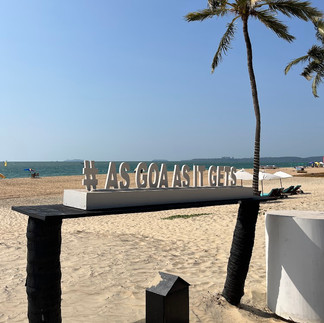


After soaking in the sights of Goa, Luke’s next adventure took him on his first train ride in India! Feeling a bit nervous after hearing the wild stories and seeing photos of overcrowded trains with people even on the roofs, he wasn’t sure what to expect. But to his surprise, the experience was quite pleasant.
The Indian railway system has a rich history, dating back to the days of the British East India Company. The first train in India ran in 1853, marking the beginning of what would become one of the largest and busiest rail networks in the world. The railways were initially developed to transport goods and resources, but they quickly became the lifeblood of the country, connecting far-flung regions and diverse communities.
Arriving at the station felt almost like being in an airport, with plenty of signage and multiple platforms. It was an unexpectedly modern experience, complete with an app that allowed Luke to track when his train would arrive at the platform. Super neat!






The train journey itself was a longg one. He was travelling 745kms (463mi) from Madgaon to Kochi which was an estimated 13 hour journey and in a different state of Kerala. Lucky for him, Jelley booked him a ticket in one of the sleeper carriages which had air conditioning and a private cubby to lie down in. The train even had a little food carriage which was equipped which cheap train-made curries. A few walks around the train quickly made Luke realize that safety might have been lower on the list of priorities on this train...












Little did Luke know that his epic train journey would stretch far beyond the expected timeline. The trip turned into a grueling 23-hour marathon, thanks to the train's frequent stops and slow pace. By the time Luke finally arrived in Kochi, it was 2:30 a.m., and he was totally exhausted.
During the journey, Luke had messaged his accommodation to let them know he’d be arriving late. They assured him it wouldn’t be a problem. But in India, there’s a peculiar habit: people often bobble their heads and even say yes quite agreeably, even when they don’t fully understand what you're saying. This was one of those situations.
Worn out and just wanting to lie down, Luke tried to hail a tuk-tuk or an Uber to take him from the train station to his accommodation. But, in a cruel twist, there wasn’t a single one around. In a country where you’re constantly pestered by tuk-tuk drivers, the irony was almost laughable.




With no other options, Luke decided to walk the 40 minutes to his accommodation. The streets were deserted, and it felt a bit sketchy to be walking alone in the dead of night, but all he could think about was getting horizontal. One thing Luke knew about India was that when the city sleeps, the wild dogs come out. These dogs, often rabid and aggressive, scour the streets in packs, and it’s definitely not safe to encounter them at night. Luke walked cautiously, alert to any movement in the shadows. About 15 minutes into his walk, he found himself in a dark alleyway, face to face with a snarling, rabid dog—its eyes were literally glowing and foam dripping from its mouth. Bad news.
Luke stayed calm, recalling the advice his travel doctor had given him: first, get the rabies vaccine (oops, should’ve done that haha). Second, if confronted by a dog, find a stone or object and try to scare it away. Channeling his childhood baseball skills, Luke grabbed the biggest rock he could find, took a deep breath, and hurled it with all he had. The rock hit the dog squarely on the nose—strike! It worked! The dog bolted away and left Luke to breathe a huge sigh of relief. Tonight was not his night to get rabies!
He picked up his pace, eager to reach his accommodation without further incident. But when he finally arrived, the place was completely dark & locked up. No lights, no signs of life. Luke tried calling the owner—no answer. Great. By now, it was close to 3:30 a.m., and Luke was tempted to just curl up under a tree and sleep. But the thought of the dogs lurking in the darkness made that idea impossible. Determined not to be defeated, he decided to try his luck and see if any doors were left unlocked. The building complex was new, with all the rooms looking identical. Not knowing where to start, Luke wandered up to the top floor and down a long hallway, feeling discouraged and utterly drained. On a whim, he tried one random door. It was unlocked! He hesitated thinking this could be someone else’s room—but he was desperate at this point. He flicked on the lights and looked around. It was empty and the room seemed eerily familiar. He checked the booking confirmation photos on his phone, compared them with the room, and realized with disbelief—this was his room! The first door he tried, in the middle of the night, in a strange building, fighting rabid dogs, turned out to be his. It was an unbelievable end to a long and eventful journey. A friendly reminder that India is not for beginners haha

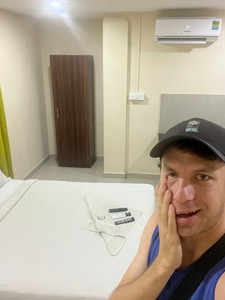


The next morning, Luke headed downstairs to find the owner and inform him of his arrival. When he arrived at the reception, the owner was obviously perplexed how Luke managed to get into the building. Is breaking and entering a thing in India? haha luckily he didn't seem to care just as long as the bill was paid. It was a funny encounter considering the lifesaving events of the night before.






With just a short time left in India, Luke explored a few small areas around Kochi, but the city just felt like another crowded, polluted metropolis (complete with rabid dogs!). Being in such busy urban environments made Luke reflect deeply on global issues like climate change. The extreme pollution in the air and waterways, along with the general filth in many Indian cities, left him feeling discouraged and a bit cynical about the impact of the environmental efforts he’d made back home in the West. The sheer scale of India's population made the stakes feel so much higher. It was hard not to wonder if all the recycling and eco-friendly practices in smaller countries could ever make a meaningful difference in the face of such vast challenges. To put it into perspective, the following chart shows the population of India compared to other nations.




Feeling a bit rattled and discouraged, Luke decided to take a bus down to Alappuzha, a town known for its beautiful canals and waterways. Alappuzha, often referred to as "Alleppey," is a laid-back destination with a fascinating history. Once a bustling trading center during the colonial era, Alleppey nickname "Venice of the East" for its intricate network of backwaters and charming houseboats. The town’s charming atmosphere was a welcome change from the chaos of the cities.






Luke took a short day tour of the canals, gliding through the tranquil waters and soaking in the peaceful surroundings. The tour was a delightful exploration of the backwaters. A large boat first took them to a small village where they enjoyed a traditional Indian lunch.






Afterward, they switched to a smaller boat, where a local guide used a paddle to navigate the narrow canals—no engine, just the quiet rhythm of the boat moving through the water. It was a calm and relaxing experience, made even more interesting by the group of French tourists on Luke’s boat. Despite their limited English, the journey was pleasant and filled with quiet camaraderie.








Along the way, Luke noticed several communist symbols, like the hammer and sickle, painted on walls and flags blowing in the wind. It was surprising to learn that Kerala, the state Luke was in, is one of the few democratically elected communist states in India—a curious oxymoron in such a diverse country.




After the tour concluded, Luke took another train south to Munroe Island, a secluded gem with an interesting history. Munroe Island is named after Colonel John Munro, a British Army officer who became a resident in the early 19th century on behalf of the East India Company. Known for his efforts to root out corruption and his advocacy for the local states against British interests, Munro earned the respect and affection of both the ruling Rajas and the people. His legacy as one of the greatest British administrators in the region led to the island being named in his honor.








Monroe Island is home to a small, isolated community with a distinctly different culture from what Luke had seen elsewhere in India. The local people wore a unique garment—a small, sheet-like skirt known as a "mundu." The mundu is a traditional garment in Kerala, often worn by men. It's a symbol of regional identity and comfort in the hot, humid climate. There is also a completely different language spoken in Kerala and Munroe Island (mostly Malayalam). This was yet another reminder of how uniquely diverse India is, with each region offering its own cultural identity.




Upon arriving at the Island there was deafeningly loud music being played all throughout the island. A network of loud speakers played a never ending loop of traditional music with drums and singing. Turns out there was a festival on and the music was to be played on a 24 hour cycle. Made for a great night sleep…
The hostel Luke stayed at on Munroe Island had a chill vibe, nestled right next to the water. With hammocks to relax in and bicycles available to explore the island, it was an idyllic spot. Luke met a great group of fellow travelers there—French, Italians, English, and even some Indians from New Delhi on holiday. Interestingly, despite being from the same country, the Indians from the north had to communicate with the locals in broken English because the local language was so different from Hindi. It was wild to witness this linguistic divide within the same nation.








The next morning, Luke woke up early for a solo sunrise kayak around the island. Paddling through the serene canals, he thoroughly enjoyed the peacefulness of the surroundings. While it was a bit sad not to share this beautiful experience with his partner in life and travel, he still found joy in the tranquil solitude of the moment.












That afternoon, Luke hired a bike to explore more of the island. As he rode around, he stumbled upon a local temple celebrating the festival, which turned out to be the source of the constant music he’d been hearing. To his surprise, it was live music, with members of the community taking turns playing throughout the night—an impressive display of local talent and tradition.
A few Europeans were there, but most of the crowd were locals, gathered to celebrate. They were generously giving out free food to the community, but there was a catch—no cutlery, just hands, as is traditional in India. Having avoided eating curry with his hands until now, Luke realized today was the day. Being left-handed, he instinctively used his left hand, only to quickly discover this was a huge cultural misstep, as the left hand is traditionally reserved for less savory tasks in Indian culture (among others)… woops! After some deep apologies at the misunderstanding, the experience turned out to be a super fun one, interacting with the locals including the local children who were so excited to see some friendly foreigners.












After a very eventful day, Luke returned to the hostel for a quick swim and some relaxation. That evening, the group at the hostel gathered to make homemade gnocchi together, turning the night into a super fun and memorable experience with his new friends.








The final stop on Luke’s solo journey was Thiruvananthapuram—just as challenging to pronounce as it looks! Also known as Trivandrum, this neat little town sits at the very bottom of Kerala. Although Luke didn’t have much time to explore since he had a flight to catch, he managed to squeeze in a sunset walk along the beach. During his stroll, he stumbled upon a random aquarium festival taking place right on the shore. Must have been prime-festival season in Kerala?!






It was a fun adventure through India but Luke was ready to reunite with his other half who was settling in to her new job in cold and snowy Frankfurt! But before he did, Luke planned a quick stopover in Singapore and Qatar, catching up with familiar faces along the way.
It was somewhat surreal to return to Doha 1 year after leaving from working at the World Cup, and a HUGE contrast from being in India. It was very special to reconnect with close friends and colleagues still living there, especially Yvonne & Ken who were like parent figures when living there! Luke even got to catch a match of the Asian Football Cup which was on. It was great to see the legacy use of some of the striking infrastructure built for the 2022 World Cup.















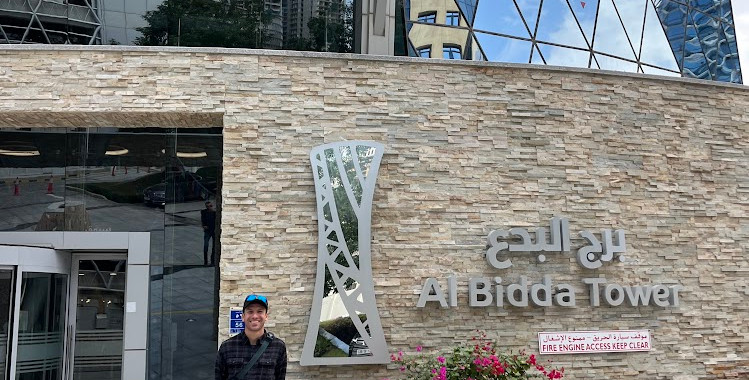
Finally, it was time to take one more flight to another world - Frankfurt, Germany. Luke didn't care where the destination was, so long as Jelley would be there!
Until then,

- A Kiwi and A Cali
P.S. Yes, this a new record for the most-delayed post .. but we won't give up!! We've concluded our time living in Frankfurt now and currently sat at Edinburgh airport heading to Paris (again!). We hope to share a quick 6 month catchup post very soon, and then be up to speed to share the next stage of our European adventures in 'real time'.













Comments